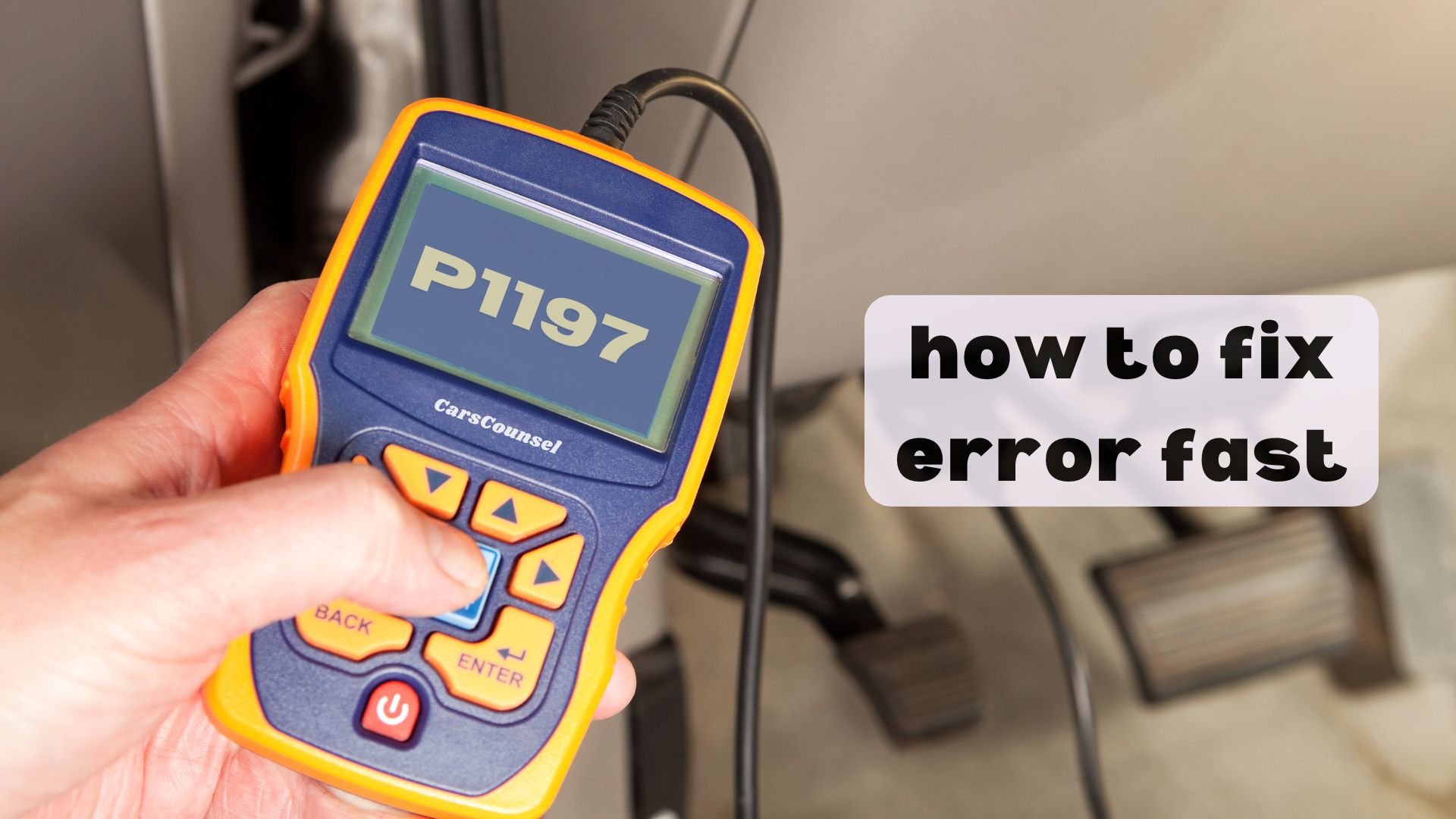You’ve likely never experienced a more frustrating issue than dealing with a faulty exhaust gas temperature sensor 4, but that’s exactly what’s happening when your car throws a P1197 code. This sensor is responsible for monitoring exhaust gas temps while the engine is running, and when it malfunctions, it can lead to decreased performance, increased emissions, and faulty temperature monitoring. But don’t worry, you’re not alone – and identifying the root cause of this code is the key to getting your car running smoothly again.

Quick Navigation
Key Takeaways
- The P1197 code indicates a problem with the exhaust gas temperature sensor 4, affecting engine performance, fuel efficiency, and emissions control.
- Faulty sensor readings can cause decreased performance, engine hesitation, misfires, and increased emissions, leading to environmental harm.
- Inspect the sensor’s wiring and connectors for damage or corrosion, and test the sensor’s functionality to identify the root cause of the issue.
- Exhaust system leaks can also trigger the P1197 code, so inspect the exhaust system for any leaks or blockages.
- Use an OBD-II scanner to diagnose and clear the code, and consider consulting a professional mechanic for a more accurate repair estimate.
Code Description and Causes
When your vehicle’s onboard computer triggers the P1197 code, it indicates a problem with the exhaust gas temperature sensor 4, specifically related to its performance while the engine is running.
This sensor is responsible for temperature monitoring, ensuring ideal fuel efficiency and emissions control.
Sensor failure, wiring or connector issues, and exhaust system leaks can cause the P1197 code to be triggered.
Faulty temperature monitoring can lead to decreased performance and increased emissions.
It’s essential to identify the root cause of the issue to make the necessary repairs and prevent further damage.
Symptoms of P1197
Several symptoms may arise when your vehicle’s onboard computer triggers the P1197 code, indicating a problem with the exhaust gas temperature sensor 4.
You may notice decreased fuel efficiency, as the sensor’s faulty readings affect engine performance. Engine hesitation or misfires might occur, causing your vehicle to stumble or stutter when accelerating.
The check engine light will likely illuminate, and you might experience rough idling or stalling. Additionally, your vehicle’s emissions output may increase, which can be harmful to the environment.
How to Fix P1197
You’ll need to take a methodical approach to fix the P1197 code.
Start by using an OBD-II scanner to confirm the error code and diagnose the specific issue.
Then, follow these steps:
- Inspect the wiring and connectors associated with the exhaust gas temperature sensor 4 for any damage or corrosion.
- Test the sensor’s functionality and replace it if necessary using a proper Sensor Replacement procedure.
- Check for any exhaust leaks that could be affecting the sensor’s readings.
- Use Diagnostic Tools to clear the code from the ECM and test drive the vehicle to guarantee the issue has been resolved.
- Verify that the repair has been successful and the code is no longer present, thereby certifying that it has been properly fixed.
Cost and Additional Information
The cost of repairing the exhaust gas temperature sensor 4 performance issue can vary depending on the specific cause of the problem and the cost of parts and labor in your area.
You can expect to pay between $150 to $300 for parts and labor. If you’re not comfortable with DIY repairs, consider consulting a professional mechanic for a more accurate repair estimate.
Don’t forget to utilize diagnostic tools like OBD-II scanners to help identify the root cause of the problem. Additionally, investigate online resources like factory service manuals and repair guides for further assistance.
More OBD-II Codes
| P1201 | P1298 | P1297 | P1296 |
| P1295 | P1290 | P1289 | P1227 |
| P1299 | P1206 | P1205 | P1389 |
| P1479 | P1480 | P1481 | P1482 |
| P1483 | P1484 | P1485 | P1486 |
| P1291 | P1292 | P1293 | P1294 |
Frequently Asked Questions
Can I Drive Safely With the P1197 Code?
You can still drive with the P1197 code, but maintain a safe distance and monitor your engine’s performance closely, as the engine warning light is on, indicating potential issues that need attention to prevent further damage.
Will a Faulty Exhaust Gas Temperature Sensor Affect My Engine’s Performance?
Imagine driving a car with a faulty exhaust gas temperature sensor, like Sarah who noticed her engine knocking persistently. A faulty sensor will indeed impact your engine’s performance, leading to decreased fuel efficiency and potential engine knock, as the sensor’s incorrect readings affect engine timing and combustion.
Can a Clogged Catalytic Converter Cause the P1197 Code?
You’re wondering if a clogged catalytic converter can trigger the P1197 code; yes, it can, as it affects exhaust gas flow, influencing sensor readings. Try converter cleaning or sensor calibration to resolve the issue before replacing the sensor.
How Often Should I Replace the Exhaust Gas Temperature Sensor?
You should replace the exhaust gas temperature sensor every 50,000 to 100,000 miles, depending on driving conditions and sensor quality, as its lifespan varies; however, it’s essential to follow the manufacturer’s recommended replacement intervals for peak performance.
Will a P1197 Code Trigger a Failed Emissions Test?
As you prepare for your vehicle inspection, a faulty exhaust gas temperature sensor can coincide with failed emissions tests, as it directly affects emissions standards; so, yes, a P1197 code can trigger a failed emissions test, making it essential to address the issue promptly.
Conclusion
You’ve diagnosed the P1197 code, now it’s time to take action. Don’t delay, as a faulty exhaust gas temperature sensor 4 can lead to decreased performance, increased emissions, and potential engine damage. Did you know that a single faulty sensor can increase emissions by up to 50%? Fixing the issue promptly can save you money and the environment. Consult your factory service manual or repair guide for specific guidance, and get back on the road with confidence.

